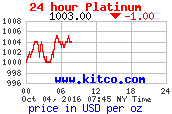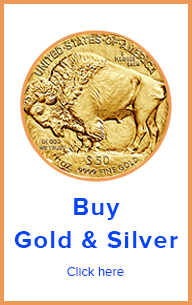Precious Metals Valuation
Purity & Weight Units
Gold, Platinum, Silver & Diamonds
Portland Gold Silver Valuation Guide
How are Precious Metals Valuated?
The value of a precious metal item is based its purity and weight. To determine the value, All items are measured for precious metal content (purity) and weight. Based on this, the value of the items is determined.
Gold: The King of Metals
Gold is an easy to work with metal, with infinite uses, and always in great demand. Gold is liquid. There is always someone ready to buy it. That is why it is the king of metals.
Gold Content (Purity / Fineness)
Gold content is traditionally measured in Karats. More precise, percentage of gold content, percentage based analysis can be done by electronic means. Unless they are assayed bullion, gold items are never pure. Gold is a very soft metal. In order for gold items it to be of practical use, gold needs to be alloyed with hardners. Alloys are also used to manipulate gold coloration (i.e. white gold). How much alloy is used to manufacture the gold item determines its purity.
Gold Purity Testing (Karating)
Gold testing can be done electronically and by gold testing chemical solution. Determining the gold purity of an item is called “Karating”. Gold items typically are stamped for karat value. For instance, a 14 karat chain will have a “14K” stamped in the clasp, a 18 Karat ring will have “18K” stamped on the inside. An item that is stamped at higher karat value than what it tests for is “under karated”.
Gold Under Karating
Gold under karating is very common. Unless an item is severely under karated, the under karating is not considered fraud. However, if detected, it will affect the gold item’s valuation. This is because the karat value of a gold item is based on an “up to” rating. Not an specific content percentage. If a gold item tests as 10 karat but it is stamped 14K, that is a fraud.
The “karat” gold purity rating is ancient, and based on the weight of the carob seed. At that time the weight of the carob seed was the best bench mark available. Since there is variation within that, and a few other factors, that may be the reason there is so much gap between karat rating; 10K, 14K, 18K instead of 10K, 11K and so on.
Gold Chemical Testing
Chemical gold testing is done applying testing solutions. The testing solution for which the item is karated for should not react when applied to the item.
Example: A 14K item will react to the 18K testing solution but not to the 14K testing solution. If it reacts to the 14K testing solution, it is under karated. If the item does not react to 10K testing solution, it means the item 10K rather than 14K
Gold Electronic Testing
High tech, modern testing equipment is much more precise. However, this equipment, if not properly used, will not test correctly. High end electronic testers give gold content percentage and karat rating. Because of this, this equipment exposes under karating.
- Rule of Thumb Gold Identification
- Gold karat rating is typically stamped in the item. Look in clasp, inside ring, or similar place
- Stamp may be faded. Use a lupe
- If not stamped, most likely not gold
- EP means Electro Plated – Basically thin gold coated
- GF means Gold Filled – Basically thick coated
- Gold is not magnetic. If item reacts to magnet, it is not gold
Types of Gold Impurities
Impurities are all the metal alloys mixed with gold in order to manufacture the gold item. These include:
- Hardeners – Used to make gold harder. Example: Dental gold
- Softeners – Used to make gold easier to work with – Example: Solder for connecting components
- Colorant – Used to manipulate coloration – Example: White gold
Portland Gold Silver Valuation Guide
Gold Karat Rating (Content = Fineness)
| Karat | Gold Content | Typical Use | Comment |
| 8 | Up to 33% | Souvenirs | Not too common |
| 10 | Up to 41% | Jewelry | Very common |
| 14 | Up to 58% | Jewelry | Most common |
| 16 | Up to 67% | Dental | Alloyed with hardeners |
| 18 | Up to 75% | Higher end jewelry | Common |
| 22 | Up to 92% | High end jewelry | Less common – Very soft |
Notes:
- Gold karat rating is usually stamp in gold item. Stamp may be faded
- If not stamped, most likely not gold
- EP means Electro Plated – Basically thin gold coated
- GF means Gold Filled – Basically thick gold coated
- Use a magnet. It item is magnetic, it is not gold
Platinum Purity
- 95% Platinum is 95% platinum 5% iridium (less common)
- 90% Platinum is 90% platinum 10% iridium (more common)
- Almost always stamped in the item
- Not magnetic
Silver Purity
- Sterling silver is from 80% to 95% pure silver. Most commonly 0.925 (92.5%) pure silver
- Usually stamped in the item
- Not magnetic
Weight Unit Conversion Chart
| Weight Unit | ozt | oz | dwt | ct | gr |
| Ounce Troy (ozt) For Precious Metals |
1.000 | 1.097 | 20.000 | 31.103 | |
| Ounce Avoirdupois (oz) | 0.911 | 1.000 | 18.231 | 28.349 | |
| Pennyweight (dwt) | 0.050 | 0.055 | 1.000 | 7.775 | 1.555 |
| Carat (ct) For Diamonds & Gems |
0.132 | 1.000 | 0.020 | ||
| Gram (gr) | 0.032 | 0.035 | 0.643 | 5.000 | 1.000 |


![[Most Recent Quotes from www.kitco.com]](http://www.kitconet.com/charts/metals/gold/t24_au_en_usoz_2.gif)
![[Most Recent Quotes from www.kitco.com]](http://www.kitconet.com/charts/metals/silver/t24_ag_en_usoz_2.gif)
![[Most Recent Quotes from www.kitco.com]](http://www.kitconet.com/charts/metals/platinum/t24_pt_en_usoz_2.gif)










